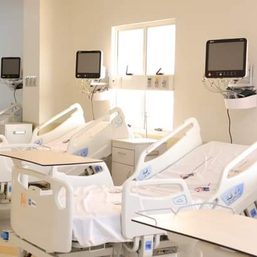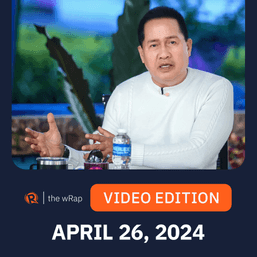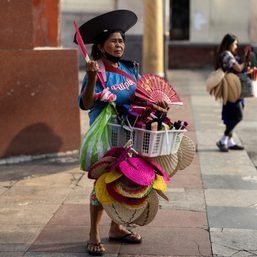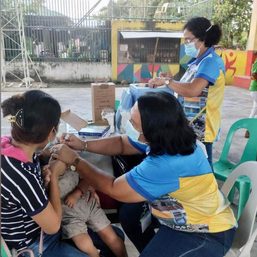SUMMARY
This is AI generated summarization, which may have errors. For context, always refer to the full article.
![[ANALYSIS] What they don’t tell you about Philippine education and health](https://www.rappler.com/tachyon/2023/06/TL-What-they-dont-tell-Philippines-Education-Health-June-6-2023.jpg)
(Third in a series)
We are republishing this from marengwinniemonsod.ph with permission from the author.
As you may know, Reader, the educational attainment and health status of the population, while having a tremendous impact on individual well-being, largely determines the wealth of a country.
Why is a country’s wealth important? Because it provides information about the economy’s long-term health, particularly on its capacity to sustain growth. A fall in wealth indicates that a country is depleting its assets and may not be able to sustain its future GDP growth.
What is the wealth of a country composed of? Four items:
- produced capital (e.g. infrastructure);
- natural capital (both renewable e.g. agricultural land, and nonrenewable, e.g. minerals);
- human capital; and,
- net foreign assets.
By all accounts, human capital, calculated as the present value of future earnings for the labor force, is the largest component of global wealth, and the wealth of most countries, including the Philippines. And how do we improve human capital? Increased education and health status of the present and future labor force.
So, what do we know about the Philippines’ education and health status?
Well, first, they are positively associated: i.e., good education leads to good health, and good health makes for better educational outcomes.
Second, that there is really bad news from the Philippine Development Plan (PDP) 2023-2028: The Philippine Learning Poverty rate is 90.9 %. What does that mean? It means that more than nine out of ten Filipino children are unable to read and understand short, age-appropriate text by age 10. Learning Poverty is a combination of two things:
1. Schooling Deprivation (the share of primary-aged children out-of-school); and
2. Learning Deprivation (the share of pupils below a minimum proficiency in Reading).
Learning Poverty in Philippines is 56.4 percentage points higher (where higher is worse) than the average for the East Asia and Pacific region, and 30.5 percentage points higher than the average for lower middle income countries (which includes the Philippines).
That should qualify as an inconvenient truth, but to be consistent with the earlier ones, let us compare the Philippines with the rest of ASEAN-5. And we discover that our learning poverty is much higher than theirs. And that will be our Inconvenient Truth #4.
Compare our 90.9% Learning Poverty with Malaysia’s 42.8; Indonesia’s 35.4; Thailand’s 23.5; and Vietnam’s 1.7%. (All data from the countries’ Learning Poverty briefs). Weep, Reader, for the blighted future of our country’s current crop of 10-year-olds, with only one in ten able to read and understand what she is reading.
Is it because the Philippines’ expenditure per child in primary school is the lowest (at US$569 PPP) among the ASEAN-5? Well it certainly has something to do with it, but consider, Reader, that Vietnam’s expenditure (at US$1,290 PPP) is the second lowest expenditure, but Vietnam has the lowest Learning Poverty in the region. The quantity of expenditure may be less important than the quality of expenditure (corruption makes for inefficiencies).
Then there is the matter of the Human Capital Index (HCI), which measures the expected productivity as a future worker of a child born today. It is a function of education and health, underscoring their importance for the productivity of people. It ranges between 0 and 1, where 1 indicates the benchmark of complete education and full health.
And here comes Inconvenient Truth #5: The Philippine HCI is 0.52, which means a child born today will only have 52% of the expected productivity she would have if she had complete education and full health. How does this compare with the rest of the ASEAN-5? Again, the inconvenient truth is that our country has the lowest HCI. Only compare with Vietnam’s HCI of 0.67, Malaysia’s 0.61, Thailand’s 0.61, and Indonesia’s 0.54.
The PDP 2023-2028 reports more bad news: Only 6.39% of third-graders and only 12.63% of sixth-graders achieved at least “Proficient” level in the 2018 National Achievement Test .
And we all know, the country’s performance in international large-scale assessments (i.e., Programme for International Student Assessment or PISA, and Trends in International Mathematics and Science Study or TIMSS) revealed serious challenges in the sector, as the Philippines ranks the lowest overall among all countries assessed. Inconvenient Truth #6.
The PDP goes on: At the tertiary level, only 42% of the 451,962 who applied for professional licenses in 2019 passed their respective licensure examinations.
The University of the Philippines, the national university, has fallen to the 801st to 1,000th ranking in the 2023 World University Rankings. It is one of only three Philippine universities ranked within the top 1,500 in the world from a total of 1,975 Higher Educational Institutions (HEIs) in the country.
Finally, our health status (it is included in the HCI above), vis-à-vis the ASEAN-5. It is the same story, alas. Inconvenient Truth #7 is that the Philippines has the highest infant mortality, the highest child mortality, the second-to-the-lowest life expectancy (Indonesia’s is one year lower than us). Insofar as undernutrition is concerned, we are the second highest (next to Indonesia) in prevalence of stunting (height for age). Early childhood stunting is negatively associated with cognitive performance of children.
Reader, to add context: the World Bank has noted that there is a worldwide education/learning crisis. And, of course, we have just emerged from a worldwide health crisis with long-term effects. What is important for us to understand is that these crises have been handled very poorly by the Philippines, relative to other ASEAN countries, specifically the ASEAN-5.
Cheat Sheet
Inconvenient Truth #1: What they don’t tell you… and why we need these ‘inconvenient truths’
Inconvenient Truth #2: Inconvenient truth on Philippine income inequality
Inconvenient Truth #3: (this article) What they don’t tell you about Philippine education and health
Inconvenient Truth #4: Philippine Learning Poverty Rate is 90.9% and is the highest among the ASEAN-5. The 90.9% means 9 out of 10 children among our 10-year-olds cannot understand what they are reading.
Inconvenient Truth #5: The Philippine HCI is 0.52, which means a child born today will only have 52% of the expected productivity she would have had if she had complete education and full health.
Inconvenient Truth #6: The Philippines’ performance in some international large-scale assessments is lowest overall among all countries assessed.
Inconvenient Truth #7: The Philippines has the highest infant mortality, the highest child mortality, the second-to-the-lowest life expectancy among the ASEAN-5.
More to come. – Rappler.com
Solita “Winnie” Monsod was the first National Economic and Development Authority secretary appointed after the fall of the Marcos dictatorship in 1986. She is a professor emerita at the UP School of Economics where she taught starting 1983. She finished her degree in economics in UP and obtained her masters in economics at the University of Pennsylvania. She is a board director of Rappler Inc.
Add a comment
How does this make you feel?
![[OPINION] 5 thoughts about the Philippine healthcare system](https://www.rappler.com/tachyon/2023/01/thought-leaders-HEALTHCARE-philippines.jpg?fit=449%2C449)
![[In This Economy] Is the Philippines quietly getting richer?](https://www.rappler.com/tachyon/2024/04/20240426-Philippines-quietly-getting-richer.jpg?resize=257%2C257&crop=194px%2C0px%2C720px%2C720px)
![[In This Economy] A counter-rejoinder in the economic charter change debate](https://www.rappler.com/tachyon/2024/04/TL-counter-rejoinder-apr-20-2024.jpg?resize=257%2C257&crop=267px%2C0px%2C720px%2C720px)
![[Vantage Point] Joey Salceda says 8% GDP growth attainable](https://www.rappler.com/tachyon/2024/04/tl-salceda-gdp-growth-04192024.jpg?resize=257%2C257&crop_strategy=attention)
![[ANALYSIS] A new advocacy in race to financial literacy](https://www.rappler.com/tachyon/2024/04/advocacy-race-financial-literacy-April-19-2024.jpg?resize=257%2C257&crop_strategy=attention)





![[Free to Disagree] Sabwatan ng mga doktor at drug companies](https://www.rappler.com/tachyon/2024/04/tl-sabwatan-doktor-drug-companies-April-22-2024.jpg?resize=257%2C257&crop=292px%2C0px%2C720px%2C720px)
There are no comments yet. Add your comment to start the conversation.